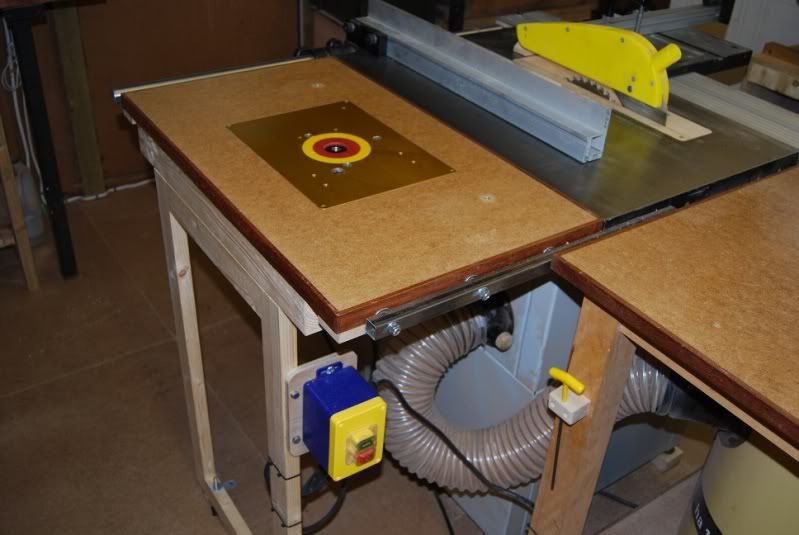condeesteso
Established Member
I admit I am fascinated by benches. Recently did a big one with a wooden-screw twin-screw face vice, but I really wanted to explore leg vices. So I have just done one and want to share what I discovered, what I tried and how it came out.
First though, I am not the first to make one and this isn't about sucking eggs... but for anyone considering one, some of what I tried and learnt may be handy.
The basic principle. It's a vertical beam with the screw nearer the top, and a guide through the leg at the bottom. So closing force is down-geared (the ratio of distance between guide pin and screw, over the distance from guide pin to jaw). In my case it was about 75%. But it's worth noting a vice is pressure, not force. And a typical leg vice has a jaw a mere 8" wide. There's good reason for that I think, as they are quite prone to racking (in the horizontal plane) so greater width would be fairly useless.
I made mine using a metal screw (recovered from an old Axminster bench tail vice. It's very basic, and was lying around.
Wood v metal screws - wood ones cost way more, have a much greater pitch (about double) which is good, but stick out a lot more and tend to get in the way sometimes. Also note the beam / gearing principle - the metal screw has a lower pitch but that pitch is up-geared in that beam ratio. I mean one turn may be say 10mm, but at the jaws it's maybe 13mm.
My whole reference to leg vices has come from Chris Schwarz (who seems to me to be the World's foremost advocate of them). So I read all his work on them (not just the book, various mag articles too). Then I decided to make a few changes:
- it seems usual to place the guide very low down. That means raising the stretchers a bit, probably. I placed the guide above the stretchers (which are 125mm, 100 off ground). This has an effect on that beam ratio, but given the quite sm,all area of the vice face I did my rough sums and decided a few benefits: I get the stretchers where I want them, I don't bend so far to move the guide pin (sad, I know) and I can get my foot under the bottom of the beam to pull it out when opening the vice. NOW it's only leg-vice users that may get the real advantage of that one
All the support in this vice is in one vertical plane - so it is sure to rack side-to-side. I made the guide mortice interference, and spent a pretty time tuning it so it was zero clearance side-to-side. It does need a few mill top and bottom though, as it will effectively pivot.
First though, I am not the first to make one and this isn't about sucking eggs... but for anyone considering one, some of what I tried and learnt may be handy.
The basic principle. It's a vertical beam with the screw nearer the top, and a guide through the leg at the bottom. So closing force is down-geared (the ratio of distance between guide pin and screw, over the distance from guide pin to jaw). In my case it was about 75%. But it's worth noting a vice is pressure, not force. And a typical leg vice has a jaw a mere 8" wide. There's good reason for that I think, as they are quite prone to racking (in the horizontal plane) so greater width would be fairly useless.
I made mine using a metal screw (recovered from an old Axminster bench tail vice. It's very basic, and was lying around.
Wood v metal screws - wood ones cost way more, have a much greater pitch (about double) which is good, but stick out a lot more and tend to get in the way sometimes. Also note the beam / gearing principle - the metal screw has a lower pitch but that pitch is up-geared in that beam ratio. I mean one turn may be say 10mm, but at the jaws it's maybe 13mm.
My whole reference to leg vices has come from Chris Schwarz (who seems to me to be the World's foremost advocate of them). So I read all his work on them (not just the book, various mag articles too). Then I decided to make a few changes:
- it seems usual to place the guide very low down. That means raising the stretchers a bit, probably. I placed the guide above the stretchers (which are 125mm, 100 off ground). This has an effect on that beam ratio, but given the quite sm,all area of the vice face I did my rough sums and decided a few benefits: I get the stretchers where I want them, I don't bend so far to move the guide pin (sad, I know) and I can get my foot under the bottom of the beam to pull it out when opening the vice. NOW it's only leg-vice users that may get the real advantage of that one
All the support in this vice is in one vertical plane - so it is sure to rack side-to-side. I made the guide mortice interference, and spent a pretty time tuning it so it was zero clearance side-to-side. It does need a few mill top and bottom though, as it will effectively pivot.











































